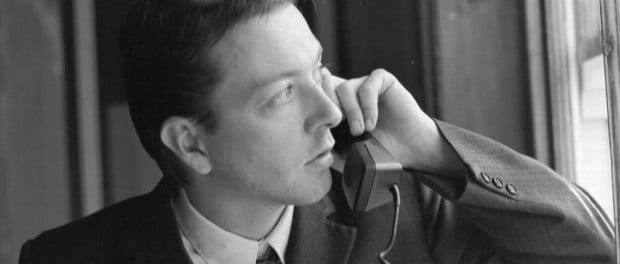In the fourteen years he’s been making films, Christopher Nolan has pretty much established himself as the go-to director for Hollywood blockbusters: from the incredible Dark Knight series to the mind-bending Inception, and now more recently the sci-fi epic Interstellar Nolan has proven time and time again his ability to create top quality entertainment. These films will undoubtedly sell tickets, but still provide audiences with an intelligent and emotional depth that many big budget films seem to lack. It was therefore very interesting to find that his earliest feature, Following, was filmed on a mere budget of $6000, with a running time of just 70 minutes. A humble beginning for such a highly regarded director, yet despite the low budget and length, Following is not a film to be cast aside, and seeing that we’re in the month of November – a time specifically reserved for the viewing of film noir – what better time than now to look back on Nolan’s underrated neo-noir debut?
In film noir, the audience is typically presented with protagonists by whom we’re somewhat challenged as to whether we should root for them or not – Following is no exception. Simply put, it tells the story of a sympathetic, if not slightly creepy, young writer who spends most of his time following strangers around the streets of London looking for inspiration. He soon finds himself caught out, however, by a particularly charming man who reveals himself to be a thief and is quickly taken under his new friend’s wing into a dark criminal underworld.
[youtube=https://www.youtube.com/watch?v=5q8bBAKNSA8]
Like many of Nolan’s other works, Following is told in a non-linear fashion, utilising flashfowards in order to constantly throw the viewer off and place us in a deep sense of foreboding. This especially works well with the noir genre, as our protagonists are typically the kind of people we are constantly forced to re-evaluate and judge with each new scene; with the story told out of order, it’s almost impossible to really make a clear assessment of any of the characters, making the thriller aspect of it even more compelling. This narrative structure can, as with most Nolan films, at times make the story difficult to follow, but it’s relatively worth it for the twisty resolution.
Though it’s always plain the film never had much money surrounding it, Nolan made the best of what little he had, using a black-and-white filter as well as natural lighting to place his characters in extreme shadows so as to highlight their moral ambiguity, another staple of film noir. The music is subtle but effective in creating a shady atmosphere (though the absence of Hans Zimmer does feel slightly odd), however while the story is all to the point, I can’t help but feel that a little more time could have been added in order to further the evolution of the characters, especially the scenes in which our young protagonist develops an increased enjoyment in his life of crime.
Nevertheless, this is still a very impressive beginning to Nolan’s iconic filmography; the characters are interesting, the story is unique and simple yet still engaging and clever in terms of narrative structure, and of course it’s always fun to see things that would unintentionally become shout-outs to future features, like the Batman symbol on a door or the fact one of the characters is named “Cobb”, the name of the main protagonist in Inception. Perhaps not a must-see, but definitely worth a watch for any fans of the director, or for anyone looking for a solid film noir to watch this month.
Words by Samantha King

